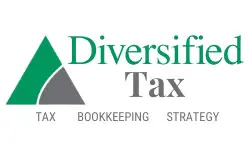Maximizing Your Tax Deductions This Fall
Table of Contents
Maximizing Your Tax Deductions This Fall
As the leaves begin to change and the air turns crisp, fall is not just a time for pumpkin spice lattes and cozy sweaters; it’s also an opportune moment to reflect on your financial health, particularly regarding tax deductions. Understanding the various tax deductions available can significantly impact your financial situation, allowing you to save money and potentially increase your refund. This article will guide you through the essential tax deductions to consider this fall, helping ensure you’re well-prepared for tax season.
Understanding Tax Deductions
Tax deductions are expenses that you can subtract from your total income, reducing the amount of income that is subject to taxation. By lowering your taxable income, you can decrease your overall tax liability. There are two primary types of deductions: standard deductions and itemized deductions.
Standard Deductions
The standard deduction is a fixed dollar amount that reduces your taxable income. The amount varies based on your filing status. For the tax year 2025, the standard deduction amounts are as follows:
- Single or Married Filing Separately: $15,750
- Married Filing Jointly or Qualifying Surviving Spouse: $31,500
- Head of Household: $23,650
Choosing the standard deduction is often simpler, as it does not require you to keep track of individual expenses.
Itemized Deductions
Itemized deductions allow you to list specific expenses that can be deducted from your income. This option is beneficial if your deductible expenses exceed the standard deduction. Common itemized deductions include:
- Medical and dental expenses
- Mortgage interest
- Charitable contributions
- State and local taxes
To determine which option is best for you, consider using tax software or consulting a tax professional.
Key Tax Deductions to Consider This Fall
As you prepare for the upcoming tax season, here are some essential deductions to keep in mind:
1. Charitable Contributions
Fall is a popular time for charitable giving, especially around the holidays. Donations made to qualified charitable organizations can be deducted from your taxable income. Keep records of your contributions, including receipts and bank statements, to substantiate your claims.
2. Medical Expenses
If you have incurred significant medical expenses throughout the year, you may be eligible to deduct these costs. For the 2025 tax year, you can deduct medical expenses that exceed 7.5% of your adjusted gross income (AGI). Eligible expenses include:
- Hospital bills
- Prescription medications
- Long-term care insurance premiums
3. Home Office Deduction
With remote work becoming more common, many individuals are eligible for the home office deduction. If you use a portion of your home exclusively for business purposes, you can deduct related expenses, such as:
- A percentage of your rent or mortgage interest
- Utilities
- Internet costs
4. Education Expenses
If you or your dependents are pursuing higher education, you may qualify for deductions related to tuition and fees. The American Opportunity Tax Credit and the Lifetime Learning Credit are two options that can help offset education costs.
5. State and Local Taxes
You can deduct state and local taxes paid during the year, including property taxes and income taxes. However, keep in mind that the total deduction for state and local taxes is capped at $10,000.
Tax Credits vs. Tax Deductions
While tax deductions reduce your taxable income, tax credits directly reduce the amount of tax you owe. Understanding the difference between these two can help you maximize your tax savings.
Tax Credits
Tax credits can be either refundable or non-refundable. Refundable credits allow you to receive a refund even if you owe no tax, while non-refundable credits can only reduce your tax liability to zero. Some popular tax credits include:
- Earned Income Tax Credit (EITC)
- Child Tax Credit
- Education credits
How to Claim Tax Credits
To claim tax credits, you typically need to complete specific forms when filing your tax return. Tax software can guide you through the process, helping ensure you don’t miss out on any eligible credits.
Preparing for Tax Season
As fall progresses, it’s essential to prepare for tax season. Here are some steps to help you get ready:
1. Organize Your Documents
Gather all necessary documents, including W-2s, 1099s, and receipts for deductible expenses. Keeping everything organized will streamline the filing process.
2. Review Your Financial Situation
Take a moment to assess your financial situation. Consider any significant life changes, such as marriage, home purchases, or job changes, as these can impact your tax situation.
3. Consult a Tax Professional
If your financial situation is complex, consider consulting a tax professional. They can provide personalized advice and help you navigate the intricacies of tax deductions and credits.
Common Mistakes to Avoid
When it comes to tax deductions, there are several common pitfalls to watch out for:
1. Failing to Keep Records
One of the most significant mistakes taxpayers make is not keeping adequate records of their expenses. Ensure you maintain receipts and documentation for all deductible expenses.
2. Ignoring Changes in Tax Laws
Tax laws can change from year to year, impacting your deductions and credits. Stay informed about any changes that may affect your tax situation.
3. Overlooking Eligible Deductions
Many taxpayers miss out on deductions simply because they are unaware of them. Take the time to research and understand all available deductions.
The Importance of Timing
Timing can play a crucial role in maximizing your tax deductions. Here are some strategies to consider this fall:
1. Accelerate Deductions
If you anticipate being in a higher tax bracket next year, consider accelerating deductions into the current year. This could involve making charitable contributions or paying medical expenses before the year ends.
2. Defer Income
If possible, defer income to the following year. This strategy can help lower your taxable income for the current year, allowing you to take advantage of deductions.
Conclusion
As fall approaches, it’s the perfect time to evaluate your tax situation and explore potential deductions. By understanding the various deductions available and preparing adequately, you can maximize your tax savings and set yourself up for a successful tax season. Remember to stay organized, keep accurate records, and consult a tax professional if needed. With careful planning, you can make the most of your tax deductions this fall and beyond.




